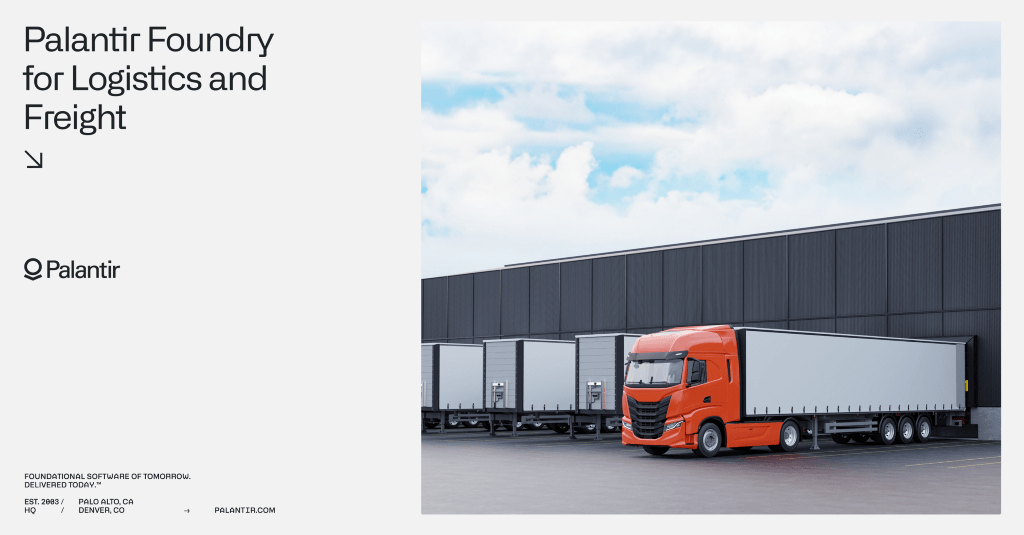
Trucks and HGVs transport 72% of American freight, hauling more than $10 trillion of American goods every year. The typical long-haul driver can clock anywhere between 400 and 700 miles a day, and work upwards of 300 days of the year. On top of antiquated routing systems and siloed freight scheduling, geopolitics, trade regionalization, inflation and labor shortages create demand and supply shockwaves that can complicate this already precarious world of work. As a result, drivers find themselves constantly squeezed to balance back-to-back ramp times, while still fulfilling trends in consumer demands.
Amid these challenges, supply chain and operations professionals are faced with questions like: which shipments can we merge while still meeting demand, how will our own priorities impact sales, as well as how can we best utilize limited driver resources?
Siloed data across a fragmented ERP, WMS, and TMS systems, alongside individuals, teams, and organizations can lead to a dispersed data landscape which leaves stakeholders frequently incapable of navigating this challenging working environment.
Software-defined data integration
In the face of these challenges, the world is entering a new era of logistics. Next generation technology is empowering transportation organizations to both ask and answer these questions, while optimizing load planning, fine-tuning routes, reducing fuel consumption, saving costs, and minimizing emissions like never before.
With Palantir Foundry, software-defined data integration ingests source data from multiple systems into a single user interface. Customer information, purchase orders, sales, warehouses, and transactions exist in one unified system that is specifically configured for your business’ use case. You can expect to generate a view of each asset, from truck, to railcar or shipping container, and integrate this information with your financial and operational systems, to accurately model interactions across the network.
The platform offers organizations’ supply chain planners, project logistics managers, procurement and sourcing directors the ability to visualize their supply chains from end-to-end with one source of truth, and use granular capacity analysis to maximize truck, rail, vessel, and aircraft profitability. Often within hours of deployment, a common operating picture emerges, which will ultimately help create an organizational environment where freight can be transported on time from the first mile of a journey to the last, and logistics decisions are balanced against a more holistic understanding of value.
Modeling and mitigating against disruption
Logistics professionals are able to overcome disruptions caused by everything from industrial action to congestion. Real-time alerts powered by sensor data flag supply shortages and production interruptions, and recommend real-time resolutions such as lowest-cost transfer orders, purchase orders, or customer prioritization. In a real-world example, Foundry has been deployed to support Prioritized Container Handling, where an organization optimized longshoreman resources to ensure that their priority customers’ cargo shipments were not impacted by COVID-19-related disruptions. It’s also been deployed by the World Food Programme to develop a common operating picture of their supply chain. On any given day, 5K trucks, 20 ships, and over 90 planes distribute rations of food and other assistance to countries across the globe. This is enabled in part by over 750 weekly Foundry users who make operational decisions in the platform and manage the supply chain from donation to delivery in constantly changing complex emergency and conflict environments.
In the event of disruption to priority cargo shipping, Foundry can be utilized to accurately simulate scenarios across the entire value chain. By combining data on shipment, location and production, Foundry helps support accurate network modeling and scenario-planning that powers confident decision-making around load consolidation and many more elements of freight.
This powerful scenario-planning is only possible by breaking down siloed functions and data. Existing software tools are often limited to specific purchasing, materials, production, logistics and demand use cases. To liberate organizations and users from these silos, Foundry takes into account the reality of modern logistics, recognizing the interdependencies between transportation and the rest of the supply chain. Foundry is truly interoperable, meaning that the data currently locked in those existing software tools is harnessed and integrated with data from across the entire value chain. Rather than replacing existing IT investments in the supply chain, Foundry supercharges them.
Operationalize Analytics
The platform can also help increase the potential of your existing supply chain investments by automatically writing back to source systems, which means that your implementation of the software becomes a truly intelligent platform that can be enriched day after day with fresh data. Without write-back, any insights sourced from the wealth of data at your fingertips are fundamentally fleeting and short-lived. With Foundry, your logistics and transportation teams can learn from the decisions that have been made over time, and power even more intelligent freight, transportation and shipping operations.
By going beyond analytics-only dashboards, supply chain information can be connected with investment data, powering a clearer capital planning process, where investments can be made where they are needed most. With this integrated process, expect to be able to optimize between repairs and replacements, adhere to sustainability performance indicators and even accelerate progress towards your ESG goals.
An increasingly uncertain world of commerce demands ever-more advanced supply chain and logistics capabilities. With real-time alerting, network modeling, operationalized analytics, Foundry is an end-to-end solution that can ensure your entire supply chain network is protected from bottlenecks and fragilities. Truly designed for interoperability, Foundry complements, rather than replaces, existing supply chain IT investments, unlocking the value from these systems in hours, and delivers compounding value through write-back.
Learn more about Foundry for Supply Chain on our website.
Palantir Foundry for Logistics and Freight was originally published in Palantir Blog on Medium, where people are continuing the conversation by highlighting and responding to this story.
